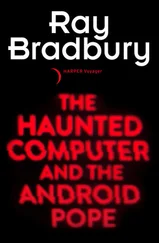Although MIT was clearly the mother-temple of hacking, the Stanford Artificial Intelligence Laboratory (known as SAIL) became a West Coast shrine of the art. By the 1970s, a kind of party line for computers called the ARPAnet (developed by researchers for the Defense Department’s Advanced Research Projects Agency) linked SAIL computers to those at MIT and hundreds of other institutions. This multi-computer long-distance network made it possible for programmers at various institutions to send messages and even programs to one another.
Games, of course, were one of the largest categories of community-shared programs on the ARPAnet. One day, a SAIL hacker and Stanford student by the name of Don Woods found a particularly intriguing game on the network—a nongraphic simulation of an adventure through a cavern-world that was replete with treasure, trolls, dragons, maidens, and flying horses. Woods contacted the game’s creator, Will Crowther, because he wanted to add some refinements to the program. Crowther, a computer scientist in Palo Alto, had concocted the game as a means of amusing his children, and having once been a spelunker, he decided to create a fantasy in the form of an exploration of linked caves. He was working for a company that was connected to the ARPAnet, so he had simply posted the game on the network for other hackers to enjoy. Woods, however, came to the game with a sophisticated perspective, since he had been involved in role-playing board games like “Dungeons and Dragons.” When Woods’s refinements were added to Crowther’s original version, the infamous game called Adventure was born.
I say that Adventure was infamous because research leaders and computer system managers very quickly discovered that many programmers were spending hours and days—even weeks and months!—on the game. It must be pointed out that as there were no graphics on the original Adventure , the game offered a different kind of thrill from the sensory addiction of the video games that would surface a few years later. Besides the fantasy aspect, it, and games like it, provided an intellectual challenge that caused otherwise rational programmers to spend days working their way through it.
The game is a puzzle in the form of a trip through a series of caves. Each cave poses a problem that must be solved before the player can progress to the next cave. As the player solves each puzzle and moves through the various caves, a narrative unfolds, describing the fantasy adventure. The player makes moves by typing in commands like “KILL TROLL” or “TAKE TREASURE,” and sometimes the player must backtrack through several previous caves to pick up an object—such as a sword, a bag of food, or a jug of water—that is required to solve a problem in a later cave.
Adventure spread rapidly through the ARPAnet community and was played on the big mainframes and minicomputers that were available to the computer research labs where the hard-core hackers congregated. Such relatively sophisticated games, however, were inaccessible to the Altair hobbyists and homebrewers who were dealing with computer memory sizes far too small to contain the programming code for a fantasy simulation. Even when the larger-capacity machines like the TRS-80 and Apple appeared, it was widely believed that Adventure ate up too much memory to be programmed in one of the microcomputer languages used by those computers.
But software history is largely the story of people who accomplished tasks that had previously been considered impossible. In 1978, a young man named Scott Adams decided to take up the challenge of writing a simulation game for the TRS-80 microcomputer. He succeeded in solving this “insoluble” problem in the remarkable time of two weeks. His first game was Adventure Land , which was based on Crowther and Woods’ Adventure and was totally nongraphic and text-oriented, like the original. It was an immediate success, and TRS-80 owners started buying it like crazy. Scott and his wife, Alexis, started a company, Adventure International, which grew into its own strange kind of game empire, and which seeded the software industry with Scott Adams proteges (Doug Carlston among them). In time, even Microsoft brought out a version of the original ARPAnet Adventure.
Just as VisiCalc introduced businesspeople to the benefits of computers, and WordStar showed wordslingers how computer programs could dramatically increase their productivity, Adventure-type games demonstrated to tens of thousands of nonbusinesspeople how much fun computers could be. And the idea, new at that time, that ordinary men, women, and children would find things to do with computers in their homes was buttressed by the success of Adventure Land.
But the home computer market had not yet blossomed, for there was a definite limit to the number of people who liked to solve puzzles by typing in primitive sentences like “PICK UP SWORD.” The color television generation is very sophisticated when it comes to the matter of visual media, and the monotonous look of green alphabetic characters on a screen was far less attractive than the kind of fast-moving, high-resolution, brightly colored displays that most people were accustomed to watching.
Affordable personal computers cannot be built without microprocessors, but microprocessor-based computers would never have caught on if, in addition to having good software, they weren’t also connected to television-like display screens. If computer output were still restricted to numbers and alphabetic characters printed on sheets of paper, as had been the case for decades, computers would still be confined to laboratories and data processing centers. Moreover, if it weren’t for computer graphics technology, the home computer market would never have opened up as widely as it did and would instead have remained largely a community of hobbyists.
The reason for the importance of the video display is very simple: The visual sense is the way human beings assimilate information most efficiently. People can simply understand information far better if it is presented in a visual form. And games in particular are far more exciting if they have a visual component, especially if color and motion also are involved.
A computer processes information and presents it to humans in an understandable form. Census statistics, financial data, numbers, or text is entered via keyboards, punched cards, magnetic tape, or other input devices. The central processor of the computer compiles the statistics, sorts the data, performs calculations, and processes the text. All of this is a marvelous improvement over adding machines, ledger books, and typewriters, but it wouldn’t have any meaning unless the processed information could be presented to people in an easily perceived form.
The idea that computer output could be presented in the form of images on a video screen seems natural today, but it was considered a radical innovation when it first came about in the late 1950s and early 1960s. Computer scientists might still be reading and interpreting esoteric printouts if the United States Air Force had not developed a computer that graphically displayed information about the state of the country’s air-defense readiness. And the use of computer graphics might still be confined to the military if it weren’t for those irrepressible hackers at MIT who created the first computer-based video games, like Spacewar, in the early 1960s. But Spacewar itself would not have been possible without the revolutionary breakthrough provided by a program called Sketchpad, written in 1961 by yet another brilliant MIT student, Ivan Sutherland. Sketchpad allowed computer users to produce and manipulate graphic patterns on video screens and to store the results in computers.
Читать дальше










